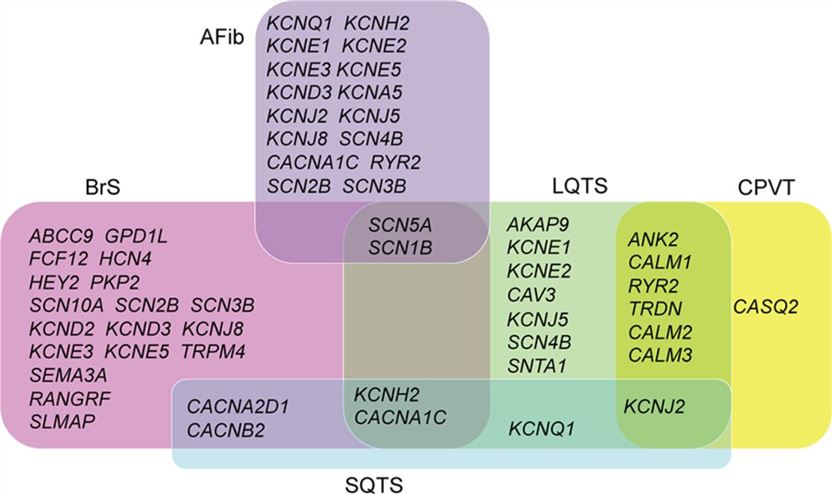Introduction of SCN4B
Sodium channel subunit beta-4 encoded by SCN4B, is expressed with a high level in dorsal root ganglia, a lower level in brain, spinal cord, skeletal muscle and heart. The protein has an extracellular immunoglobulin-like domain, a single transmembrane spanning segment, and an intracellular C-terminal domain. Voltage-gated sodium channels (NaV) are composed of one large pore-forming principal subunit (nine genes encoding nine proteins, NaV1.1-1.9) and one or two smaller transmembrane subunits considered as auxiliary (four genes SCN1B to SCN4B, generating four subunits, β1 to β4).
| Basic Information of SCN4B | |
| Protein Name | Sodium channel subunit beta-4 |
| Gene Name | SCN4B |
| Aliases | ATFB17, LQT10, Navbeta4 |
| Organism | Homo sapiens (Human) |
| UniProt ID | Q8IWT1 |
| Transmembrane Times | 1 |
| Length (aa) | 228 |
| Sequence | MPGAGDGGKAPARWLGTGLLGLFLLPVTLSLEVSVGKATDIYAVNGTEILLPCTFSSCFGFEDLHFRWTYNSSDAFKILIEGTVKNEKSDPKVTLKDDDRITLVGSTKEKMNNISIVLRDLEFSDTGKYTCHVKNPKENNLQHHATIFLQVVDRLEEVDNTVTLIILAVVGGVIGLLILILLIKKLIIFILKKTREKKKECLVSSSGNDNTENGLPGSKAEEKPPSKV |
There are four types of SCNB (SCN1B, SCN3B, and SCN4B) which are non-covalently associated with SCNA, but SCNA forms disulfide bonds with SCN2B and SCN4B. SCNB isoforms are important in modulating the channel gating kinetics; they may change the biophysical properties of the channel, such as increasing the membrane capacitance and current amplitude, and modulating its gating. Specifically, it causes negative shifts in the voltage dependence of activation of certain alpha sodium channels, but does not affect the voltage dependence of inactivation. It also modulates the susceptibility of the sodium channel to the inhibition by toxic peptides from spider, scorpion, wasp and sea anemone venom. Mutations in SCN4B have been implicated in familial atrial fibrillation and congenital long-QT syndrome. Loss of SCN4B/β4 enhances cancer cell migration and metastases formation through a RhoA-dependent signaling pathway, independently of pore-forming NaV subunits.
 Fig.1 Diagram shows overlap between the genes associated with Brugada syndrome (BrS), short-QT syndrome (SQTS), long-QT syndrome (LQTS), catecholaminergic polymorphic ventricular tachycardia (CPVT), and atrial fibrillation (AFib). (Garg, 2018)
Fig.1 Diagram shows overlap between the genes associated with Brugada syndrome (BrS), short-QT syndrome (SQTS), long-QT syndrome (LQTS), catecholaminergic polymorphic ventricular tachycardia (CPVT), and atrial fibrillation (AFib). (Garg, 2018)
This article finds presenting SCN4B as a novel AF-susceptibility gene and suggests a common genetic basis for AF and congenital long QT syndrome, as well as a sudden infant death.
This article suggests that SCN4B represents metastasis-suppressor gene reducing cancer cell invasiveness and tumor progression.
This article suggests that the patterns of scn/Scn expression could be functionally indistinct at that stage of development in the EOs of juvenile E. electricus.
This article reveals that CN2B, SCN3B and SCN4B are not major genes in our large family with an idiopathic generalized tonic-clonic seizure.
This article suggests that 28 sequence variants are identified: seven in SCN1B, three in SCN2B, two in SCN3B, two in SCN4B, four in FHL1, and ten in LMNA. Three of the variants are novel. One of the variants is non-synonymous. No disease-causing mutations are identified.
Membrane protein studies have advanced significantly over the past few years. Based on our versatile Magic™ membrane protein production platform, we could offer a series of membrane protein preparation services for worldwide customers in reconstitution forms as well as multiple active formats. Aided by our versatile Magic™ anti-membrane protein antibody discovery platform, we also provide customized anti-SCN4B antibody development services.
During the past decades, Creative Biolabs has successfully generated many functional membrane proteins for our global customers. We are happy to accelerate the development of our clients’ programs with our one-stop, custom-oriented service. For more detailed information, please feel free to contact us.
Reference
All listed services and products are For Research Use Only. Do Not use in any diagnostic or therapeutic applications.